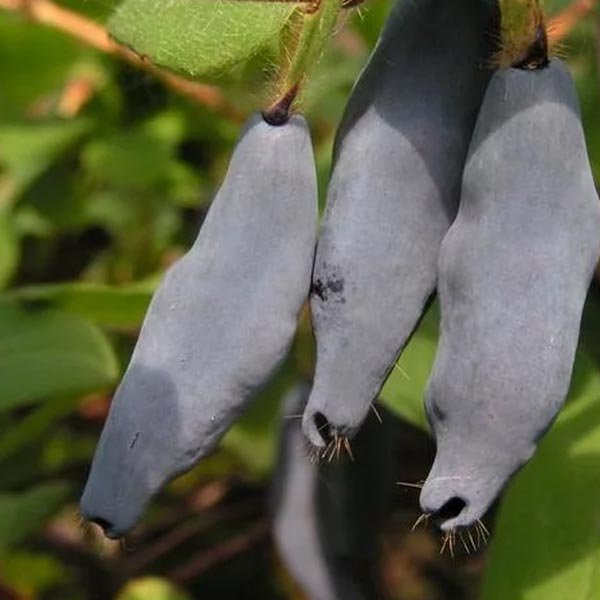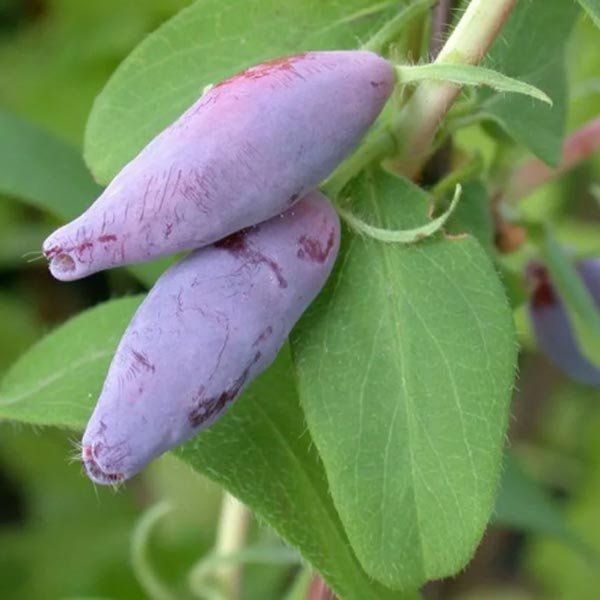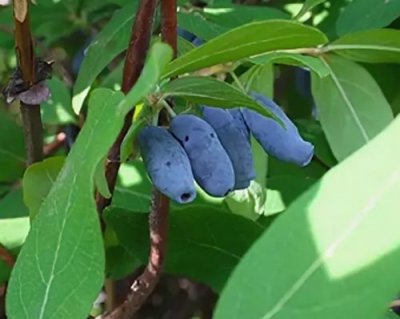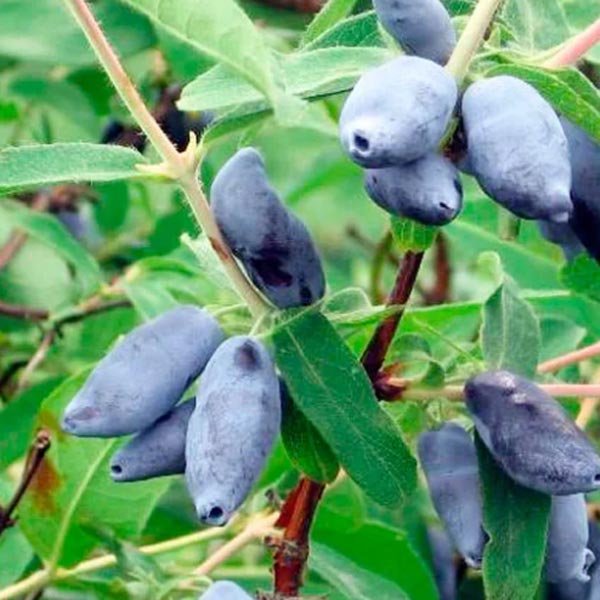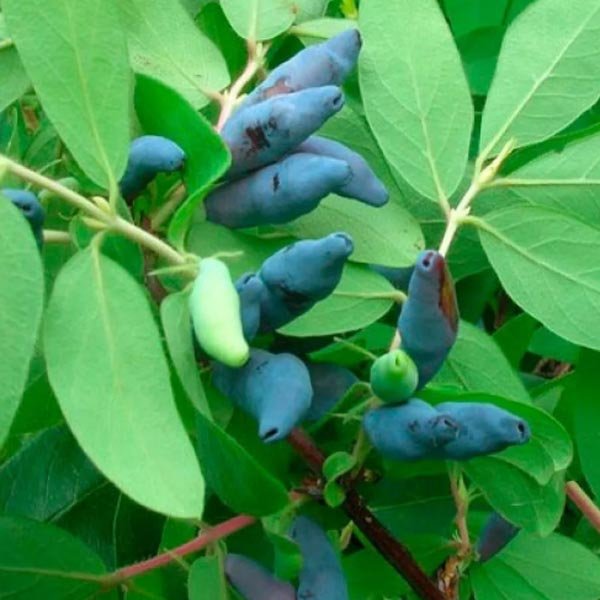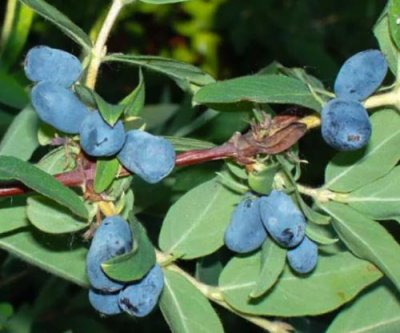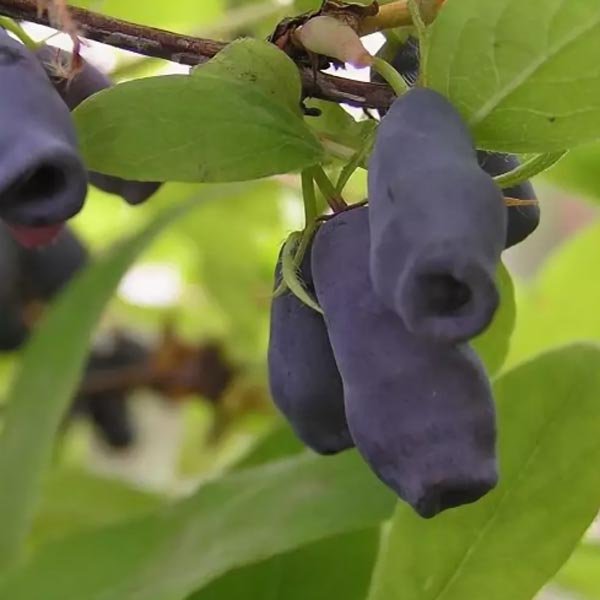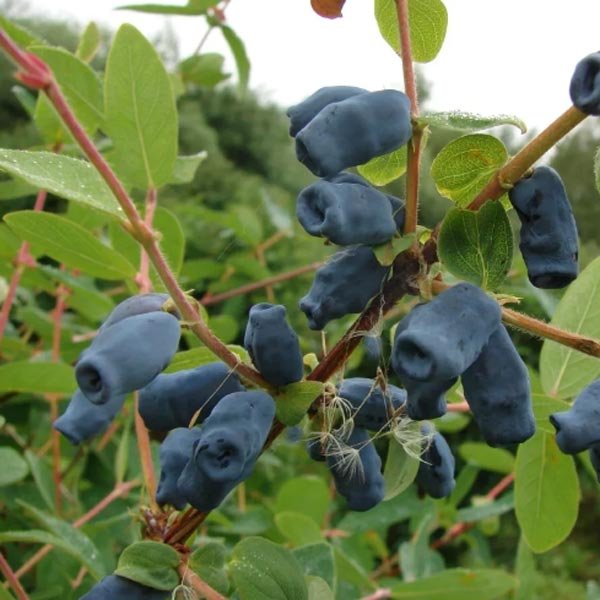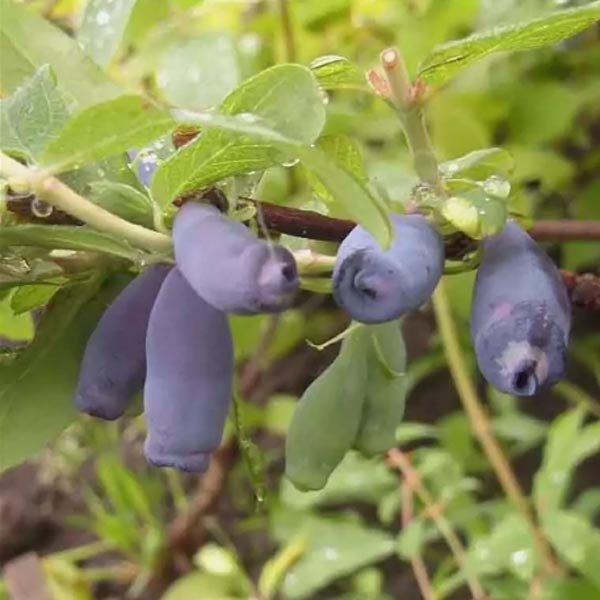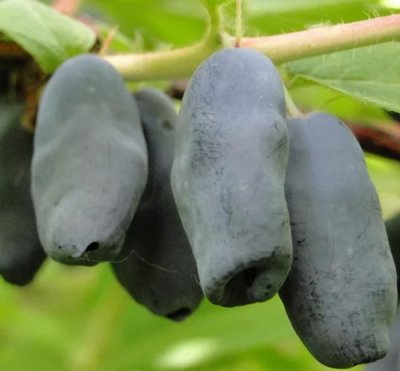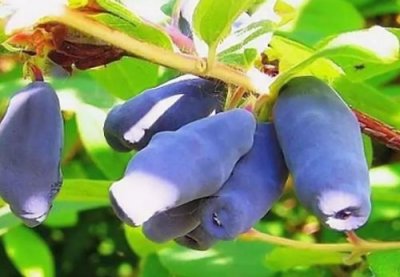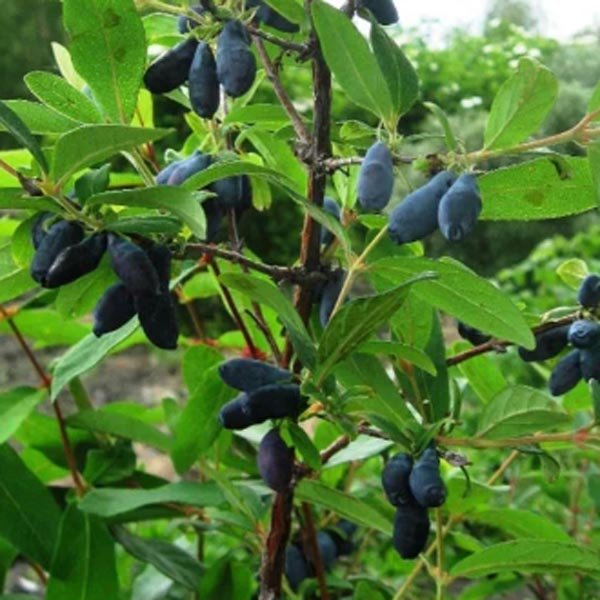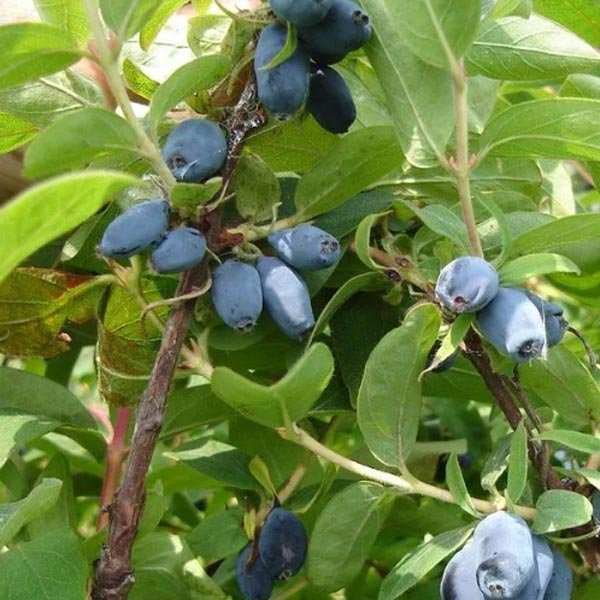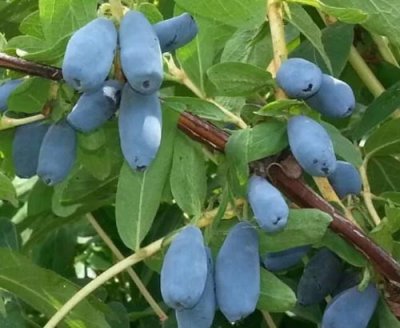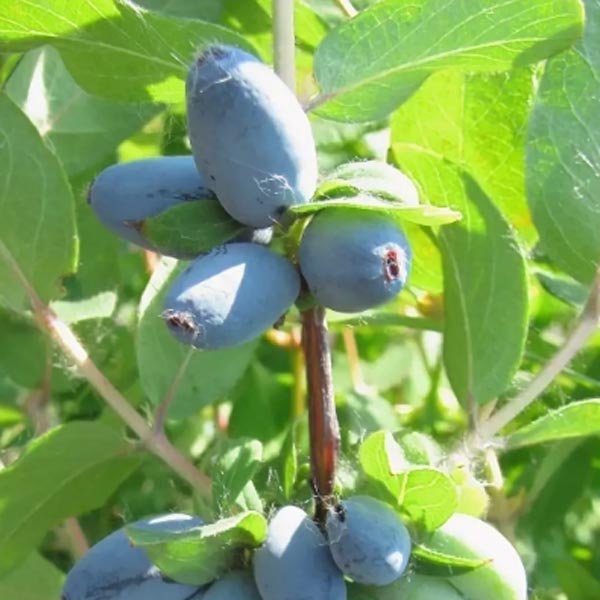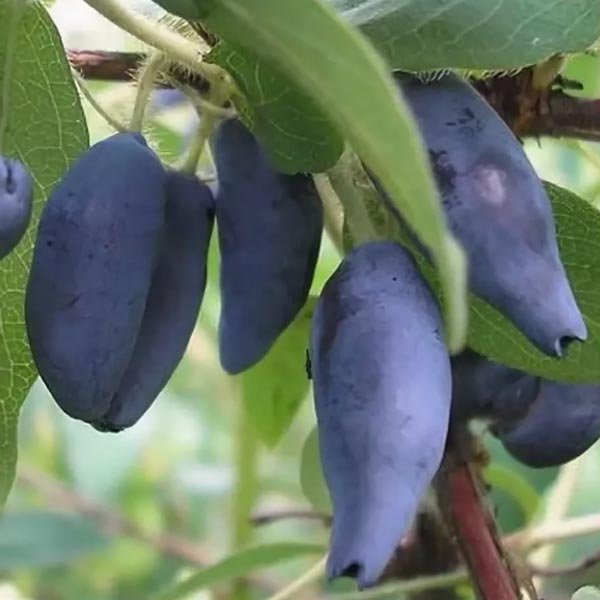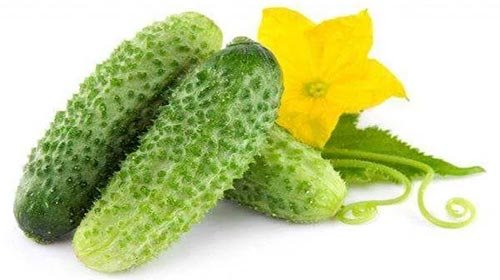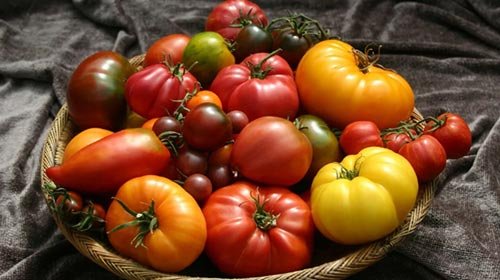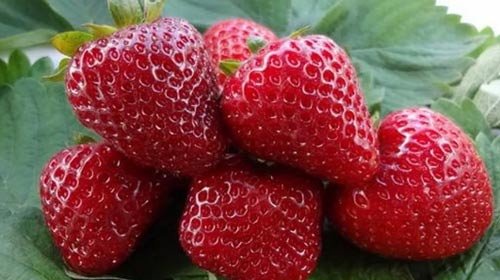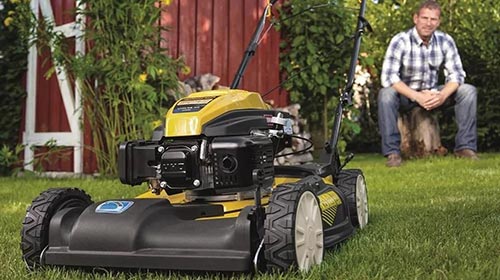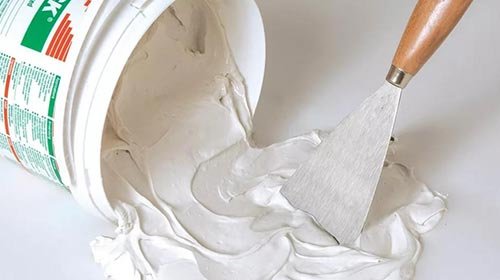A place |
Name |
Feature Rating |
| 1 | Leningrad giant | Top performance. Sweet taste |
| 2 | Altair | Increased resistance to disease and temperature extremes |
| 3 | Titmouse | Best yield |
| 4 | Long-fruited | High taste |
| 5 | Yugana | Better transportability |
| 6 | Cinderella | Adapts well to frosty climate. |
| 7 | Gerda | Resistant to diseases |
| 8 | Tomichka | Most popular variety |
| 9 | Milkovchanka | Juicy and tender flesh |
| 10 | Blue spindle | Unpretentious care |
Useful berries that can be grown independently, have long become popular. Gardeners are happy to take care of the plants, and in season they please the household and guests with tasty products. One of these is honeysuckle - an unpretentious shrub with berries that resemble grapes in appearance. They contain a huge amount of essential trace elements that are able to cleanse the body of toxins and toxins, as well as to establish the work of many internal organs and vessels.
Grow the plant almost everywhere. The main thing - to choose the most correct grade. For the climate of the Moscow region, there are also different types of plants. They are resistant to frost, so they take root well and bear fruit. Edible honeysuckle differs unpretentious care and consistency of the crop. In addition to the beneficial properties of shrubs will help decorate the garden. Experienced gardeners recommend planting berries and enjoying tasty fruits.
Top 10 best varieties of honeysuckle for the Moscow region
10 Blue spindle
 Unpretentious care
Unpretentious care
A country: Russia
Average price: 250 rub.
Rating (2019): 4.6
The name of the variety allows you to imagine the beauty of the shrub. The plant is like a spindle scattered in space and decorates the garden. For the Moscow region variety is the best fit, as it is famous for its frost resistance. The plant is vigorous - reaches the size of a meter. The fruits are quite large - weighing 1.3 grams. Dense rind makes the berries transportable. The presentation is preserved for a long period of time. Therefore, honeysuckle can be grown for the purpose of sale.
Pleasant sweet-sour taste is noted by many gardeners. Blue spindle canned and eaten fresh. Medicinal properties allow you to maintain the body in a healthy state. In addition, the berries are not calories, and therefore will be the perfect food for those who follow a diet. Customer reviews are positive. Unpretentiousness and stable yield like most. But the tendency to shedding ripe honeysuckle may not suit demanding gardeners.
9 Milkovchanka
 Juicy and tender flesh
Juicy and tender flesh
A country: Russia
Average price: 370 rub.
Rating (2019): 4.7
Homeland Milkovchanki - Kamchatka. After its breeding, the variety became immediately known among Russian breeders. It has an average ripening period and brings a good yield of about 1.5 kilograms. The bush is of medium density, low growth, compact. The fruits are small - about one gram. Sweet with a pleasant sour taste. Tasters appreciate the taste qualities of Milkovchanki. Pulp berries juicy and tender, and the skin is not too thick - almost not felt.
In the suburbs of the plant is quite popular. Its characteristics make it possible to grow honeysuckle even in harsh climatic conditions. Shoots perfectly tolerate temperatures up to –30 degrees. This advantage distinguishes a variety among many. Buyers say unpretentious in the care. In addition, the fruits are suitable for processing and carry a lot of useful trace elements that improve the work of the whole organism. Minor disadvantages include not the richest crop compared with other plant species.
8 Tomichka
 Most popular variety
Most popular variety
A country: Russia
Average price: 235 rub.
Rating (2019): 4.7
The popular variety of edible honeysuckle throughout Russia has become famous for its unpretentiousness and decent yield. The specialists who created the variety are the leaders of the selection field of activity. Tomichka belongs to the medium category. Its height is 160 centimeters. The leaves are slightly pubescent and have a small size. The jug-like shape of berries nicely adorns the bush. They showered in a mature form, which is attributed to the shortcomings of the variety.
The length of the fruit reaches 35 millimeters, and their weight reaches one gram. Smoky plaque on the surface of the peel protects the honeysuckle from external environmental factors. It has a dark purple hue and perfectly retains external qualities during transportation, despite the thinness of the skin. The flesh is tasty and juicy. Tomichka is used to make compotes, jams and preserves. Gardeners are happy to grow a variety and note in their reviews that it is not capricious, so they recommend planting it for beginners and experienced gardeners.
7 Gerda
 Resistant to diseases
Resistant to diseases
A country: Russia
Average price: 200 rub.
Rating (2019): 4.8
In 1987 Gerda was created, got it by crossing several varieties. She is short and grows up to 150 centimeters. Straight shoots are strong and withstand low temperatures. Fruits are not large - up to 0.7 grams. Gerd is well acclimatized in the Moscow region. The region has all the necessary conditions for the plant, which, by the way, need not so much. It can stretch out beautifully in the garden and decorate the yard, without requiring special care for itself. Mature honeysuckle is not showered from the bush.
By mid-June, it will be time to collect the sweet and sour fruit. Vintage variety brings quite generous than all gardeners like. In addition, Gerda perfectly resists various diseases, and also has excellent winter-hardy characteristics. Gardeners like to care for her, they note that in the process of growing a lot of effort is not required, even a novice can handle it. Edible honeysuckle ripen at the same time, which is not critical, since the fruits are not prone to shedding.
6 Cinderella
 Adapts well to frosty climate.
Adapts well to frosty climate.
A country: Russia
Average price: 269 rub.
Rating (2019): 4.8
Brought the plant in 1974. After a considerable number of years Cinderella proved to be the best. It is cultivated throughout Russia and almost everywhere it takes root well and brings a decent harvest. The variety is considered to be undersized - the maximum length is 70 centimeters. Fruits are quite long - about 2 centimeters. Ripen in June, or in the first decade, or in the third - it depends on the growing conditions. In Moscow, Cinderella is in high demand.
Due to the unpretentiousness and durability of the variety, it can be planted in various regions. It adapts well to the frosty climate, rarely gets sick in the fall. At first, the shrub will produce up to 1 kilogram of the crop, and after 7 years of honeysuckle, you can collect about 5 kilograms. With regular watering Cinderella will bring high-quality berries without a bitter taste. They can be used for various culinary purposes. Despite numerous advantages, the variety has shortcomings - shedding of ripe berries and their non-simultaneous ripening.
5 Yugana

 Better transportability
Better transportability
A country: Russia
Average price: 360 rub.
Rating (2019): 4.8
Relatively new variety, which appeared 9 years ago, managed to establish itself with the best hand and become quite popular in the suburbs. Low bush - 150 centimeters. Berries ripen on it in June. They have a dark blue color with a characteristic patina on the surface. Tastes are at a high level. Tasters give them a score of 4.9 points due to a pleasant sweetness combined with an acidic flavor. Nutritious honeysuckle like sweet tooth.
The yield of Yugana is very generous - from 3.5 to 6 kilograms from an adult bush in a season. The fruits are well kept on the branches - to collect them after ripening can be more than a month later. Thanks to the dense skin, the berries are perfectly transportable, they will preserve a nice appearance during long-term maturation.In addition, they are often frozen - the product practically does not change the taste. Feedback gardeners mostly positive. The disadvantages include self-infertility plants. Otherwise, it is ideal for growing even beginners.
4 Long-fruited
 High taste
High taste
A country: Russia
Average price: 269 rub.
Rating (2019): 4.9
The variety of Ural breeding is valued for its numerous advantages. Early large berries will delight household extraordinary taste. Long-fruited honeysuckle was obtained by crossing the sladder fruit Kamchatka form with Altai pollinators. The plant belongs to the middle-growth, it grows sprawling and cute-looking. Flowering begins in the first half of May, and the fruits are ripening by June. The shape is elongated, with a slightly pointed tip. The color is dark purple. They are distinguished by their largest size with proper care - reach a length of 2.7 centimeters, and the weight can be about 2 grams.
Juicy flesh has a slightly tart taste. Berries are excellent jams and preserves. Even after treatment, they will have a beneficial effect on the human body. Tasters appreciate the taste very well. In the climatic conditions of the Moscow region, the yield will be up to 2 kilograms per bush per season. Ripe fruits are not showered on the ground, which is a huge plus. The advantages are attributed to the compactness of the bushes - they will require little space. If the plant lacks moisture, it can get a bitter taste.
3 Titmouse
 Best yield
Best yield
A country: Russia
Average price: 420 rub.
Rating (2019): 4.9
The variety was derived by A. Skvortsov and A. Kuklina - breeders known in Russia. It was entered in the register in the 1988th year. Since then, it is famous for its tasty and healthy properties. The plant is vigorous, reaches 2 meters in height. Bisexual flowers are small, they appear in the spring. Large fruits in 4 centimeters have an elongated cylindrical shape. On their dark blue surface, you can find minor bumps and noticeable plaque.
The pulp of the Sinichka is quite juicy, has a pleasant aroma and sweetish taste. The variety is often used in cooking. Various pies, compotes and jams from it turn out excellent. Growing a plant will not be difficult, standard care will allow you to get a generous harvest. In this case it is possible to collect up to 7 kilograms of honeysuckle per season from an adult bush. Titmouse is quite satisfied with newcomers to the garden business. It is not capricious and resistant to low temperatures. The thin skin of the berries does not allow them to maintain their presentation for a long time, so they are not transportable.
2 Altair
 Increased resistance to disease and temperature extremes
Increased resistance to disease and temperature extremes
A country: Russia
Average price: 1 120 rub.
Rating (2019): 5.0
Edible honeysuckle is characterized by increased resistance to frost and various diseases. Its fruit is especially palatable. In a year, the yield reaches 2 kg from a single bush. For these qualities, breeders are very fond of the variety. In addition, its simplicity allows you to make a minimum of effort for growing - quite abundant watering before ripening and simple procedures for care. The plant reaches a height of 140 centimeters, which is the average growth of shrubs.
Not whimsical variety can successfully get along both in the sun and in dark areas. The fruits are used in cooking - canned or prepared various dishes. They can also be consumed fresh - they have a distinctive sour taste, which most people like. Gardeners speak positively about growing Altair. They note the richness of the harvest and the usefulness of the berries. In the column of deficiencies they write about the thin skin of the fetus.
1 Leningrad giant
 Top performance. Sweet taste
Top performance. Sweet taste
A country: Russia
Average price: 560 rub.
Rating (2019): 5.0
The speaking name of honeysuckle suggests that the plant has considerable dimensions. No wonder he is called the pride of Russian breeding. Leningrad giant has a very sweet taste, which do not have other varieties. The weight of one fruit can reach 4 grams, which is a significant advantage for most gardeners. In addition, shoots and roots can withstand temperatures up to –40 degrees. Due to this, the Giant is popular in the suburbs.
Diseases and pests of honeysuckle are not terrible - it is excellent against them. The shape of the berries is bell-shaped, slightly elongated and at the same time "bellied." They remain in place even after ripening. Productivity makes from 3 to 5 kilograms per season from one bush. Customer reviews give the full right to call one of the best varieties. Juicy and aromatic pulp will appeal to almost everything - even feathered. Therefore, honeysuckle may be slightly spoiled.

